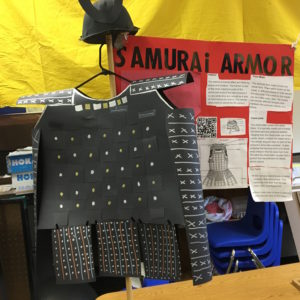 Let’s face it – having 30 students present their report on biomes can be a time and classroom management challenge. When I first started teaching, all the students stood up, one by one and made their presentations. It wasn’t long before I realized that this is not an effective use of classroom time. At a certain point, student’s attention will wander and the information being presented may be unclear and unintelligible, especially in the younger grades where students are still learning the difference between presenting and reading the pages of their PowerPoint verbatim while their backs face the class. I kept thinking there must be a better way. Speaking is an ELA standard and presenting is the reality of many jobs today. Unless your intent is to have students work on their speaking skills, not every project needs an oral presentation. There are instances where a Gallery Walk is a better option.
Let’s face it – having 30 students present their report on biomes can be a time and classroom management challenge. When I first started teaching, all the students stood up, one by one and made their presentations. It wasn’t long before I realized that this is not an effective use of classroom time. At a certain point, student’s attention will wander and the information being presented may be unclear and unintelligible, especially in the younger grades where students are still learning the difference between presenting and reading the pages of their PowerPoint verbatim while their backs face the class. I kept thinking there must be a better way. Speaking is an ELA standard and presenting is the reality of many jobs today. Unless your intent is to have students work on their speaking skills, not every project needs an oral presentation. There are instances where a Gallery Walk is a better option.
A Gallery Walk is a presentation method where each student’s project is displayed and the other students rotate from one project to another completing an accompanying assignment that the teacher has created. You should consider the following when planning a gallery walk.
- Determine which project you would like students to present in this manner.
- Create an assignment you want students to complete while viewing other students’ presentations.
- Decide how students will rotate and prepare students ahead of time.
- Decide how many presentations each student will view.
- Decide how long each student will have at each presentation.
- Plan where and how the projects will be displayed.
The benefits of the gallery walk include that it is movement oriented, content focused, has increased accountability and the presentations can take a class period. A few other aspects can be added to the presentation portion of the student gallery walk such as a student self-assessment and a follow-up activity to extend their collected knowledge.
| | | Next → |